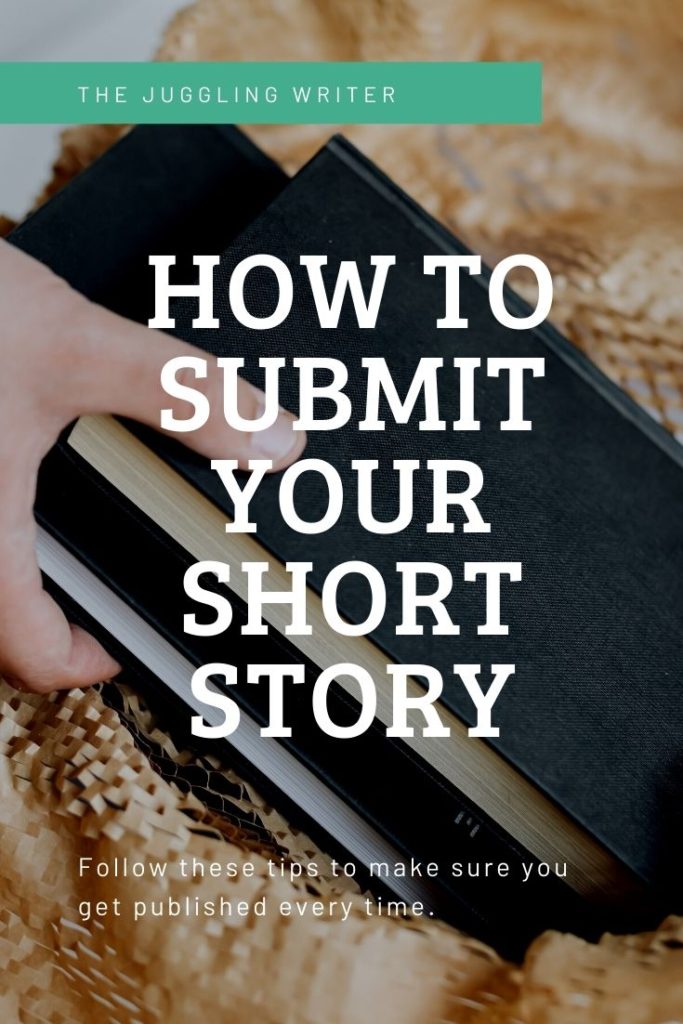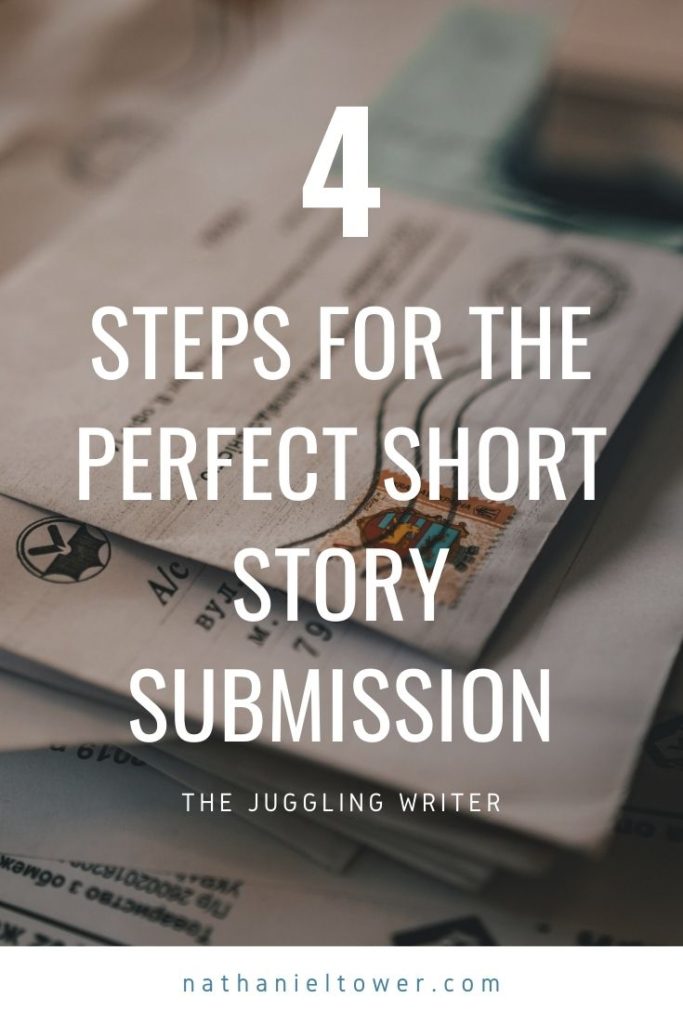Last Updated on September 27, 2020 by Nathaniel Tower
Getting your short story published is often more difficult than actually writing the story. Even with thousands of literary magazines accepting short stories for publication, you still have less than a 10% chance of getting your story published any time you submit.
Unless you know exactly how to submit a short story.
With a smart submission strategy, your chances of acceptance can double, triple, or even quadruple.
If you follow this formula for submitting your short story, you will be celebrating your publication sooner than you thought possible.
Step 1: Find the perfect publication to send your story
The top secret for getting your short story published isn’t to have the best short story idea ever. No, you need to find a publication that’s a perfect fit for whatever story you’ve written. After all, a terrible story submitted to the right venue has a better chance of publication than a great story sent to the wrong venue.
Here are some general tips for finding the perfect venue to submit your short story:
- The right word count. If your story is too long or too short, they won’t publish it.
- The right genre. Although many literary magazines claim they don’t prefer a specific genre, there are even more that do. If you send your science fiction short story to a publication that primarily publishes romantic thrillers, then you don’t stand much of a chance. For magazines that don’t have a clear genre, avoid sending pure genre fiction. For example, don’t send a horror story to The New Yorker. It’s not going to get published.
- The right aesthetic. Every publication has a style. That doesn’t mean all of their stories read exactly the same. Rather, it means there are patterns in the types of stories they publish. This may sound difficult to figure out, but all you need to do is read a handful of previously published stories. If your story is nothing like the ones you read, then it’s probably not the right publication.
Those aren’t the only factors that go into finding the right publication for your short story, but they will get you 90% of the way there.
Now that you’ve found the perfect place to submit your short story, let’s go to the next step.
Step 2: Submit your story in the right format
Literary magazines are notoriously picky about the format of short story submissions. The wrong margins, font size, or spacing will land you immediately in the rejection pile.
Not every publication tells you exactly how to format a story. If they do, you need to follow their guidelines no matter how ridiculous they sound. If they don’t provide any formatting guidance, then your best bet is to use standard short story format.
Of course, formatting isn’t just about having the right margins and fonts. You also need to save it as the right file type (Word Doc, PDF, RTF, etc.) And you need to make sure you send it using the right method. Fortunately, many publications make it exceptionally easy to submit a short story by using Submittable. For those that don’t, you will likely either need to email your story or use an online form.
There are very few publications left that don’t accept electronic submissions. For those that don’t, you’ll need to print your story and buy some stamps.
If you are emailing your story, make sure you follow their guidelines regarding attachments. Some publications do not allow you to submit attachments, which can make formatting your story a nightmare. In these cases, just do your best to get the story to look readable in the body of your email.
Okay, now that you know how to format the short story for submission, let’s talk about one more thing before you send it out.
Step 3: Include a brief cover letter and author bio with your story submission
While not every publication requires a cover letter and author bio, it’s generally best practice to include one unless they specifically tell you not to send it.
When you submit a short story, you should keep your cover letter brief and to the point. Unlike a novel query, a short story cover letter is not typically a pitch. Instead, you are simply writing a greeting, a brief introduction to yourself and the story, and a closing. Here are the best things to include in the cover letter:
- The name of the publication
- The name of your story
- An approximate word count
- A brief reason why you are submitting, if applicable
For example, you might say:
Dear Editor (use a name here if you know it, but make sure you don’t assume the editor’s gender):
Please consider “Name of Story” for publication in Name of Journal. I believe this short story of approximately XXXX words will be a great fit for your journal because of its whimsical tone that aligns with the stories you typically publish.
Thank you for your time and consideration. I look forward to your response.
Sincerely,
Your Name
And that’s pretty much all there is to it.
Don’t get carried away with the cover letter. A lot of editors don’t even read them until right before they reject or accept your story.
You also typically want to include an author bio with your submission. This can be pasted at the bottom of your cover letter. If you are submitting your short story through a submission manager like Submittable, there may be a separate field for your author bio. If the publication requests a specific word count for your bio, make sure you follow their guidelines. Otherwise, a standard author bio will usually suffice.
Step 4: Submit your short story and track your submission
Once you’ve picked your publication, formatted your story, and written your cover letter and author bio, now it’s time to hit send. But that’s not the end of your job.
You also need to make sure you track your short story submission. Using a simple submission tracker like this free one will make it easy for you to:
- Know how many times you’ve submitted your story
- Withdraw your story if it’s accepted elsewhere
- Determine any patterns of rejection that might suggest you need to rewrite the story
It may seem like an extra chore to track all your short story submissions, but I promise it will save you time and headaches in the long run. If you don’t log all your story submissions, then it’s only a matter of time before you send a story to a publication that’s already rejected it or forget to withdraw a story when it was accepted elsewhere. These types of mistakes will make editors very upset!
Final thoughts on how to submit a short story
Submitting your short story may seem like a daunting task, but it doesn’t have to be. By using the tips above, you can quickly get your story into submission shape and reduce the likelihood of rejection.
I’ve submitted my short stories over 1,300 times and have had over 200 acceptances using the formula above. In my early days of writing and submitting stories, I followed the old mantra of: if you throw enough shit at the wall, some of it will stick. As you can probably guess, not much stuck. Once I fine-tuned my process, I saw a huge increase in acceptances and income from my short stories.
Once you’ve mastered the art of submitting your short story, your next step will be to sell your short stories. When you’re first starting out, you may try submitting your stories to publications that only pay with exposure, but eventually you’ll want to move up to the big leagues! Fortunately, the process of selling your short stories isn’t much different than submitting your stories to non-paying venues. It’s all about finding the right publication and sending your best story in the right format.
So that’s all there is to it. Now it’s time for you to go submit something!
Have additional thoughts, comments, or questions about submitting short stories? Post a comment below, and remember to share this post on all your favorite channels.



Hi Nathanial,
I just discovered your website and appreciate yourself expertise.
I am a published writer with a successfully followed Facebook blog page. I would love to try submission to magazines. I write about recovering from grief based on wonderful love stories.
There has to be a way to expand my work!
Thank you for listening
curran.mary@att.net
I have been reading posts regarding this topic and this post is one of the most interesting and informative one I have read. Thank you for this!
Where can I send everything (manuscript ETC). My compute, for some reason, will not copy and paste to companies??????.